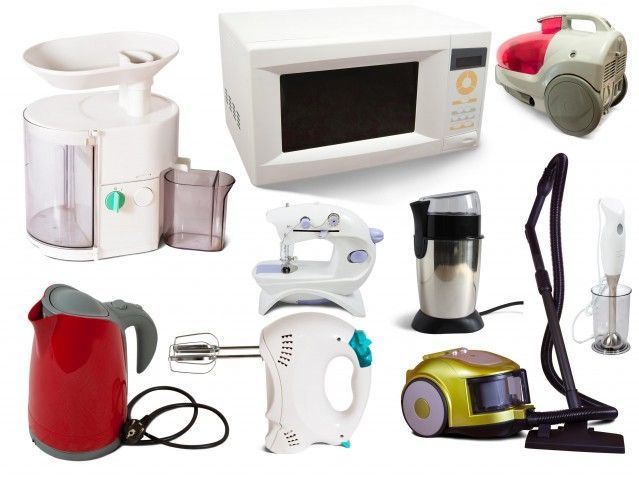IEC 60335-1 Standard
Household and Similiar Electrical Appliances
LVD Test: Under the TS EN / IEC 60335-1 standard, electrical devices that we use in all areas of our lives are critical for safety. In this regard, there are major directives around the world in terms of security experiments.
Within the scope of 2014/35 / EU LVD (Low Voltage Directive) directive, TS EN / IEC 60335-1 standard is the main standard of LVD safety test / LVD test of devices used in home and similar places. This standard covers the safety rules of electrical devices used in single-phase devices, operating at rated voltage not exceeding 250 V in others and 480 V in others, used in domestic and similar places and for commercial purposes.
As LVT Test Laboratories Co. ; We carry out LVD safety tests within the scope of TS EN / IEC 60335-1 standard in our laboratory accredited by TÜRKAK.
We carry out the following LVD tests within the scope of TS EN / IEC 60335-1 standard;
1) Classification
1.1) Devices must have one of the following classes according to their protection against electric shock:
Class I, Class II, Class III
1.2) Devices must have a suitable degree of protection (IPXX) against ingress of harmful water.
2) Marking and Instructions
Devices should be marked;
- With the rated voltage or the rated voltage range in volts,
- With the symbol of the feed type, unless marked with the declaration frequency,
- With rated input power in watts or rated current in amperes,
- With the name, trade mark or identification mark of the manufacturer or responsible dealer,
- By model or type reference,
- With IEC 60417-5172 (2003-02) symbol for Class II devices only,
- According to the degree of protection against harmful water inlet, except IPX0, with IP number
- Class III devices with the IEC 60417-5180 (2003-02) symbol.
3) Protection Against Access to Live Parts
Devices should be manufactured and enclosed in a way to provide adequate protection against random contact of the live parts. Compliance with this rule is checked by applying force to the device openings with various test probes such as articulated finger.
4) Power Input and Current
The input power declared on the label of the devices should be marked so as not to exceed the deviation values in the table below, depending on the type and operating power of the device.
Input Power Deviations
|
Equipment Type |
Rated Power W |
Deviation |
|
All Types |
up to 25 |
+ % 20 |
| Including Heating Element |
> 25 and up to 200 |
± % 10 |
|
> 200 |
+ % 5 or 20 W (higher is applied) – % 10 |
|
|
Including Motor |
> 25 and up to 300 |
+ % 20 |
|
> 300 |
+ % 15 or 60 W (higher is applied) |
The current declared on the label of the devices should be marked so as not to exceed the deviation values in the table below, according to the type and operating power of the device.
Current Deviations
|
Equipment Type |
Rated Current A |
Deviation |
|
All Types |
up to 0,2 |
+ % 20 |
|
Including Heating Element |
> 0,2 and up to 1,0 |
± % 10 |
|
> 1,0 |
+ % 5 or 0,10 A (higher is applied) – % 10 |
|
|
Including Motor |
> 0,2 and up to 1,5 |
+ % 20 |
|
> 1,5 |
+ % 15 or 0,30 A (higher is applied) |
5) Heating
During the operation of the devices at the voltage values specified in the standard, temperature measurements are taken from the points requested by the standard with thermocouples. These temperature values should not exceed the limits in the standard.
6) Leakage Current and Electric Strength at Operating Temperature
The leakage current values that they have spread to their housings during the operation of the devices are checked with the equipment and methods specified in the standard. These leakage current values must be below the limits specified in the standard.The devices are then de-energized from the supply source and a high voltage is applied between the feed ends and the enclosures at the values specified in the standard. There should not be any discharge and puncture between the sections where tension is applied during the test.
7) Moisture Resistance
The devices are kept in the humidity cabinet with the relative humidity of 93 ± 3% and the temperature between 20 ° C - 30 ° C for 48 hours. Then leakage currents are measured and electrical resistance test is applied.
8) Abnormal Operation
The components in the device are operated under single error conditions as requested by the standard. During the experiment, the devices should not show conditions such as warming and arc formation that may damage their surroundings.
9) Stability and Mechanical Hazard
The equilibrium of the devices that are not fixed on the floor or used on the table should be at a sufficient degree. The devices are tested on the inclined plane at an angle of 10 °. It should not be overturned.
10) Mecanical Strength
The devices must be resistant to mechanical impacts that may occur under normal usage conditions. The devices are tested by applying 3 impacts on the same point with the spring hammer whose impact energy is 0.5J on the part with weak mechanical strength.
11) Provision for Earthing
The resistance value between the accessible metal enclosures of the devices and the earthing tip must be under 0.1 Ω. The resistance value is calculated from the voltage drop by applying 25 A current between the metal housing and the grounding tip.
12) Screws and Connections
The screws used in joining the parts of the devices and electrical connections must be resistant to mechanical forces. Suitability is tested by tightening and loosening the screws at the moments given in the standard according to the thread diameters.
13) Clearances, Creepage Distances and Solid Insulation
The insulation ranges and superficial leakage path lengths of the different polarized energy conductors in the devices should be at a distance suitable for the operating voltage. Conformity is measured using tools such as calipers and gauges.
14) Resistance to Heat and Fire
The outer sections of the non-metallic material, the sections made of insulating material that support the energetic sections, including connections, must be heat resistant. To verify compliance, ball pressure test, glow wire test and needle flame test are performed at the values specified in the standard.

